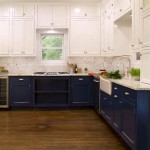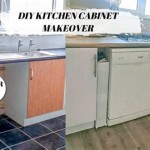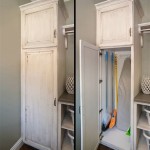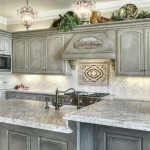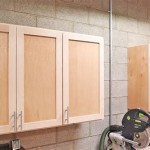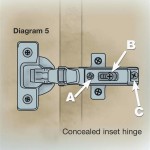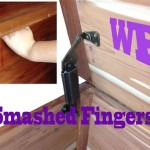Understanding and Addressing Gaps Between Kitchen Cabinet Doors
Gaps between kitchen cabinet doors are a common aesthetic and functional concern for homeowners. While perfectly aligned and flush cabinet doors represent quality craftsmanship and attention to detail, variations in materials, installation, and environmental factors can contribute to noticeable gaps. These gaps, beyond being visually unappealing, can also impact the overall performance and longevity of the kitchen cabinets.
This article aims to provide a comprehensive understanding of the causes behind these gaps, the implications they present, and the various methods available to address and rectify them effectively. The information provided is intended to empower homeowners with the knowledge necessary to diagnose the issue, explore potential solutions, and make informed decisions about cabinet maintenance and repair.
Identifying the Root Causes of Kitchen Cabinet Door Gaps
The presence of gaps between cabinet doors is rarely a random occurrence. Instead, it is typically indicative of an underlying issue that needs to be identified and addressed. Understanding the root cause is crucial for selecting the appropriate solution and preventing the problem from recurring in the future. Several factors can contribute to the development of these gaps.
One of the primary culprits is the natural expansion and contraction of wood. Wood is a hygroscopic material, meaning it absorbs and releases moisture from the surrounding environment. When humidity levels increase, the wood expands, and when they decrease, the wood contracts. This dimensional change can cause cabinet doors to warp or shift, leading to gaps, particularly in areas with significant humidity fluctuations.
Another frequent cause is improper installation. If the cabinet boxes themselves are not perfectly level and plumb during installation, the doors will inherently be misaligned. This misalignment may not be immediately apparent, but over time, as the cabinets settle and stress accumulates, gaps can begin to appear. Furthermore, even if the cabinets are initially installed correctly, the settling of the house or the movement of the foundation can cause them to shift, resulting in misalignment and subsequent gaps.
Worn-out or improperly adjusted hinges can also be a significant contributor to gaps. Hinges are responsible for supporting the weight of the doors and allowing them to swing smoothly. Over time, the screws holding the hinges to the cabinet frame or the door can loosen, causing the door to sag or shift. Additionally, the hinge mechanisms themselves can wear out, losing their ability to hold the door in the correct position. Improperly adjusted hinges, even when new, can also cause misalignment and gaps.
Finally, damage to the cabinet doors or frames can lead to gaps. Impacts, scratches, or even prolonged exposure to moisture can weaken the wood, causing it to warp or crack. A damaged door may no longer fit properly within the cabinet frame, resulting in a noticeable gap. Similarly, damage to the cabinet frame itself can affect the way the doors are aligned, creating or exacerbating existing gaps.
The Implications of Gaps Between Cabinet Doors
While the presence of gaps between kitchen cabinet doors might seem like a purely aesthetic issue, it can have several practical implications that extend beyond visual appeal. These gaps can impact the functionality, hygiene, and even the longevity of the cabinets themselves.
One of the most immediate consequences is a compromise in storage efficiency. Gaps allow dust, dirt, and pests to enter the cabinets more easily. This can lead to the contamination of stored food items and necessitate more frequent cleaning. Additionally, the gaps provide an entry point for insects like ants and cockroaches, which can then infest the entire kitchen.
Furthermore, gaps can affect the temperature and humidity control within the cabinets. In humid environments, moisture can seep into the cabinets, potentially damaging stored items or promoting the growth of mold and mildew. In colder environments, drafts can enter through the gaps, making it more difficult to maintain a consistent temperature inside the cabinets.
The structural integrity of the cabinets can also be compromised by the presence of gaps. Misaligned doors put additional stress on the hinges and the cabinet frames. This can accelerate wear and tear, leading to hinge failure, door sagging, and even damage to the cabinet frame itself. Over time, this can significantly shorten the lifespan of the cabinets and necessitate more costly repairs or replacements.
Finally, gaps can negatively impact the perceived value of the kitchen and the overall home. A kitchen with visibly misaligned and gapped cabinet doors can appear neglected and poorly maintained, potentially detracting from the aesthetic appeal and reducing the sale value of the property.
Methods for Addressing and Rectifying Gaps
Addressing gaps between kitchen cabinet doors requires a systematic approach that begins with accurately diagnosing the underlying cause. Once the cause is identified, appropriate corrective measures can be taken to rectify the problem and restore the cabinets to their optimal condition. There are several methods available, ranging from simple adjustments to more complex repairs.
For gaps caused by loose hinges, the simplest solution is to tighten the screws that secure the hinges to the cabinet frame and the door. If the screw holes are stripped, longer screws or wood glue and toothpicks can be used to provide a more secure grip. In cases where the hinges are worn out or damaged, replacing them with new hinges of the same size and type is recommended. When replacing hinges, ensure that the new hinges are properly aligned and securely fastened.
If the gaps are due to cabinet misalignment, shims can be used to level the cabinet boxes. Shims are thin, tapered pieces of wood or plastic that can be inserted between the cabinet box and the wall or floor to correct any unevenness. Using a level, identify the areas where the cabinets are out of plumb or level and insert shims as needed until the cabinets are properly aligned. Once the cabinets are level, secure them to the wall or floor with screws.
For gaps caused by warped or damaged doors, several options are available. Minor warpage can sometimes be corrected by applying moisture to the concave side of the door and clamping it in place until it dries. However, this method is not always effective and may only provide a temporary solution. In more severe cases of warpage or damage, replacing the entire door is the most reliable option. When replacing the door, ensure that the new door is the same size and style as the original door and that it is properly installed with new hinges.
In situations where the cabinet frames are damaged, repairs may be necessary to restore their structural integrity. Small cracks or chips can be filled with wood filler and sanded smooth. Larger areas of damage may require the replacement of entire sections of the frame. If the damage is extensive, it may be more cost-effective to replace the entire cabinet box. This approach ensures a consistent appearance and provides a more durable solution.
Finally, preventative measures can be taken to minimize the risk of gaps developing in the future. Maintaining a stable humidity level in the kitchen can help prevent the expansion and contraction of wood. Regularly inspecting and tightening hinges can prevent them from loosening and causing door misalignment. Addressing any signs of water damage promptly can prevent the wood from warping or rotting. By proactively addressing these factors, homeowners can help ensure the longevity and optimal performance of their kitchen cabinets.

Measuring And Helpful Answers About Cabinet Doors Eclectic Ware

How Do I Fill In The Gaps Between These Cabinet Doors Hometalk

Understanding Door And Drawer Gaps Margins Gocabinets

Measuring Up Guide Custom Made Diy Kitchen And Bedroom Furniture

Measuring And Helpful Answers About Cabinet Doors Eclectic Ware

How To Adjust The Alignment Of Cabinet Doors Construction Repair Wonderhowto

How Much Gap Is Acceptable In Inset Cabinet Doors

Measuring Up Guide Custom Made Diy Kitchen And Bedroom Furniture

How To Fix Gap Between Kitchen Cabinets And Soffit Hometalk

3 Simple Ways To Adjust Kitchen Cabinet Doors Wikihow
Related Posts

